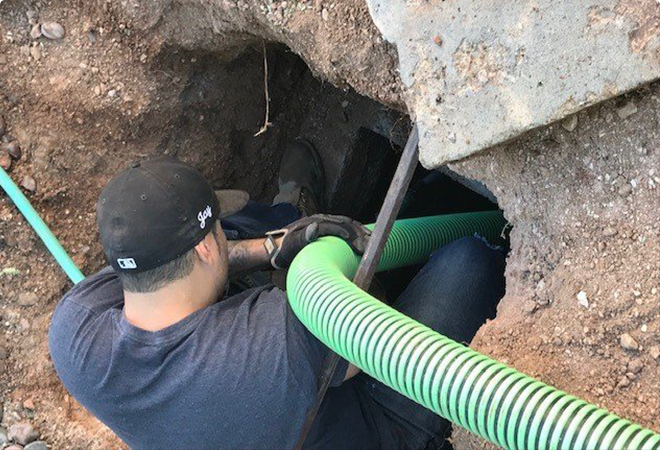As seasoned plumbing experts in Tucson and the surrounding areas, we emphasize the significance of regular septic inspections. When buying a home, it becomes even more critical to have a thorough septic inspection. Many new homeowners may encounter a septic system for the first time, and a comprehensive inspection can prevent future costly repairs or the need for a full septic replacement.
Unlike visible issues such as faulty roofing or house fixtures, septic tank malfunctions are not easily detectable, as the system is concealed underground. Unfortunately, septic tanks are often neglected by homeowners until a problem arises. This oversight can lead to significant plumbing issues and expenses that could have been avoided through proactive maintenance.
Preventing Health Hazards
Septic system failures can pose serious health hazards, including sewage back-up, clogged pipes, and drain field overflows. To safeguard your home and family, routine septic inspections are indispensable. Our experienced team at Curtis Plumbing is here to guide you through the essential aspects of septic inspection to ensure the longevity and efficiency of your plumbing system.
What Does a Septic Inspection Entail?
Our thorough septic inspection process adheres to the highest industry standards and is designed to provide you with a detailed analysis of your septic system’s condition. Here’s an overview of the key steps we take during our inspections:
- Locating the Septic Tank and Drain Field Area: Our experienced technicians carefully locate your septic tank and drain field area, ensuring a precise assessment of your entire system.
- Removal of Septic Tank Covers: We systematically remove septic tank covers to access critical components, allowing us to inspect the internal elements of your septic tank thoroughly.
- Inspection of Septic Inlet, Outlet, and Partition Wall: Our trained professionals examine the septic inlet, outlet, and partition wall to identify any signs of wear, damage, or blockages that may affect the system’s functionality.
- Evaluation of Sludge and Scum Levels: We measure and analyze the sludge and scum levels within your septic tank, providing insights into the overall health and efficiency of the system.
- Determination of Pump and Float Location (if necessary): If your septic system includes a pump and float mechanism, we carefully determine their location and assess their condition to ensure optimal performance.
- Test Hole Digging in the Drain Field Area: As part of our in-depth inspection, we may dig test holes in the drain field area to assess the operational level of effluent waste, allowing us to identify potential issues that may not be visible on the surface.
Once the inspection is complete, our team compiles a comprehensive report detailing the condition of your septic system. This report serves as a valuable resource for understanding the health of your system and addressing any necessary maintenance or repairs promptly.
Your Guide to Septic Inspection
- Regular Inspections: Schedule routine septic inspections to identify potential issues before they escalate. This proactive approach can save you both time and money in the long run.
- Early Detection: Unlike visible home features, septic tank malfunctions are challenging to detect without professional inspection. Early detection of issues can prevent costly repairs and disruptions to your daily life.
- Home Buying Considerations: If you’re in the process of purchasing a new home, a thorough septic inspection is a must. This step can reveal hidden problems and provide you with the necessary information to make informed decisions about your investment.
At Curtis Plumbing, we prioritize your plumbing needs and strive to provide the best solutions tailored to our local community. With our team of skilled plumbers, we are dedicated to ensuring your septic system operates efficiently, minimizing the risk of emergencies and costly repairs.

